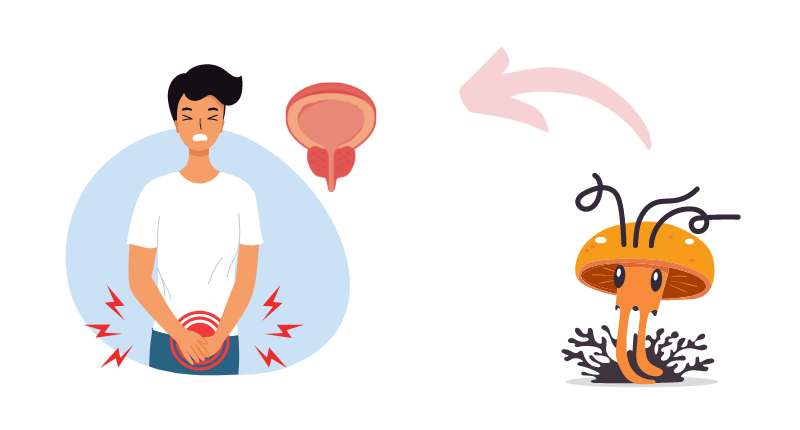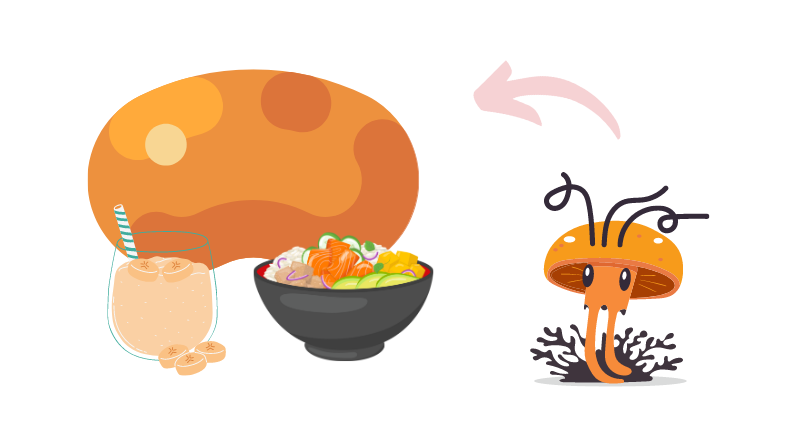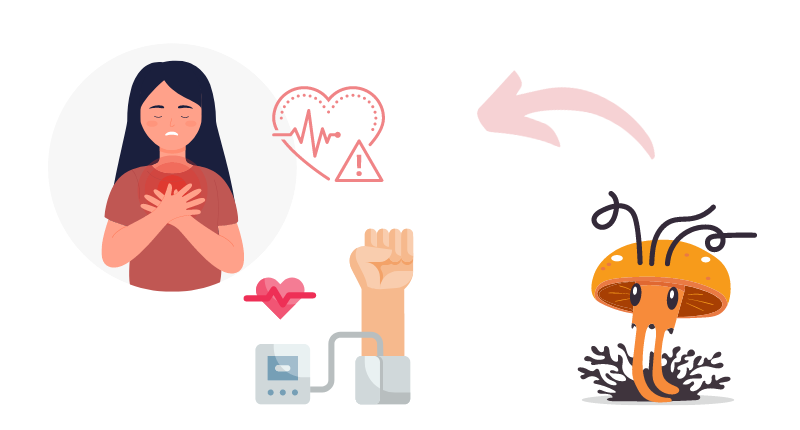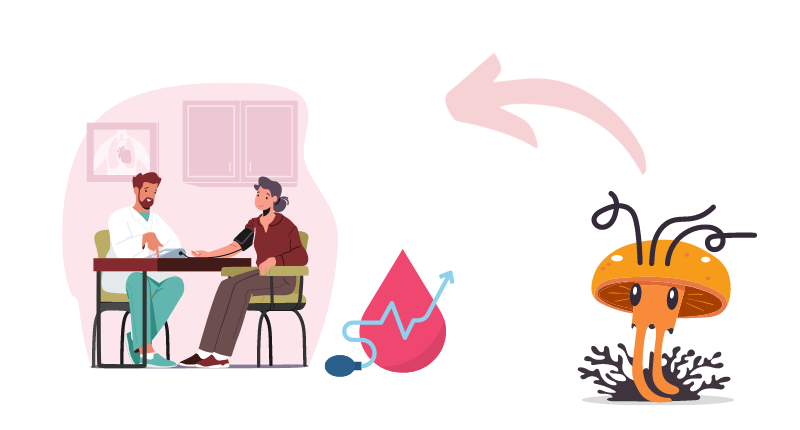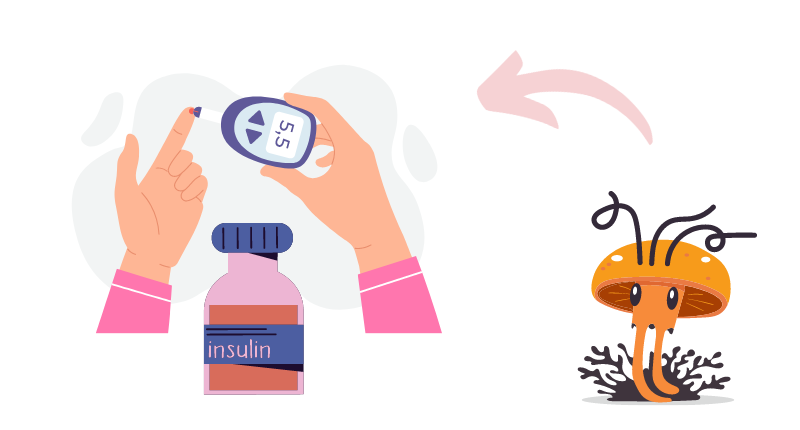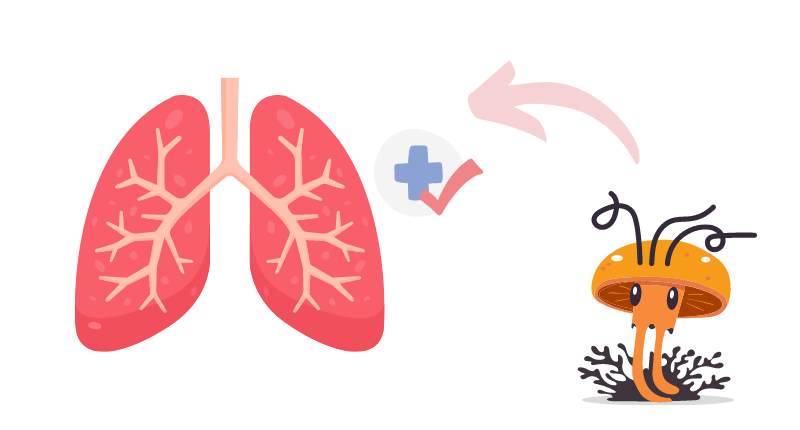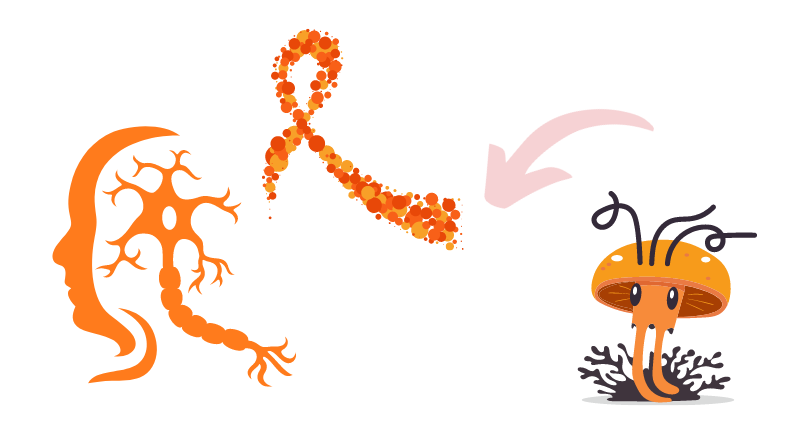In the realm of medicinal fungi, Cordyceps have gained significant attention for their extensive therapeutic potential, one of which includes their potent anti-inflammatory properties. As inflammation has been identified as a precursor to several chronic diseases, understanding the role of cordyceps in managing inflammation could open doors to new therapeutic approaches.
In this comprehensive review, we delve into the intricacies of cordyceps and their potential role in combating inflammation, with a focus on scientific evidence and mechanisms of action.
TABLE OF CONTENTS
WHAT ARE CORDYCEPS?
Cordyceps are a genre of fungi, with over 400 known species. In nature, these fungi have a fascinating parasitic lifestyle, primarily involving insects1. However, it’s their application in traditional medicine, specifically in Asian cultures, that has brought them to the limelight. Apart from their renowned potential to enhance athletic performance and boost immune health[^2^], cordyceps have been heavily studied for their anti-inflammatory properties, a focus of this article.UNDERSTANDING INFLAMMATION
Before we explore the anti-inflammatory potential of cordyceps, let’s first understand inflammation. Inflammation is the body’s natural defense mechanism against injury, infection, or exposure to harmful substances. It’s a process designed to heal, but when it becomes chronic, it can lead to various health issues, including heart disease, diabetes, cancer, and more[^3^].CORDYCEPS AND ANTI-INFLAMMATORY PROPERTIES
The healing potential of Cordyceps, especially concerning inflammation, has sparked significant interest among researchers and healthcare practitioners alike. The fungal genus houses numerous bioactive compounds that have demonstrated potent anti-inflammatory effects.BIOACTIVE COMPOUNDS: CORDYCEPIN AND POLYSACCHARIDES
Two primary compounds, Cordycepin and Polysaccharides, have been a focal point in understanding Cordyceps’ anti-inflammatory capabilities. Cordycepin, a nucleoside analogue found in Cordyceps, is touted for its broad therapeutic potential, including anti-inflammatory and anti-cancer properties1. On the other hand, Polysaccharides, the long-chain carbohydrates found in Cordyceps, have been shown to possess potent immune-modulating and anti-inflammatory properties. Polysaccharides can interact with the body’s immune cells, helping to regulate inflammatory responses1.MODULATING INFLAMMATORY RESPONSES
In the context of inflammation, research indicates that Cordyceps can inhibit the production of specific markers, including nitric oxide (NO) and Tumor Necrosis Factor-alpha (TNF-alpha)2. Both of these markers are heavily involved in the body’s inflammatory processes. By reducing the production of these markers, Cordyceps can potentially help control inflammation, thus presenting promising therapeutic implications.POTENTIAL MECHANISMS OF ACTION
While our understanding of Cordyceps’ exact anti-inflammatory mechanisms is not exhaustive, preliminary studies have started painting a picture.MODULATING INFLAMMATION PATHWAYS
Cordyceps’ anti-inflammatory actions appear to revolve around its ability to modulate critical cellular signaling pathways associated with inflammation. One such pathway is the Nuclear Factor kappa-light-chain-enhancer of activated B cells (NF-kB) pathway3. The NF-kB pathway is a vital cellular signaling pathway that controls DNA transcription, cytokine production, and cell survival. It plays a crucial role in managing the body’s immune response to infection. Inappropriate activation of NF-kB has been associated with inflammatory and autoimmune diseases, cancer, and other health conditions3. Research suggests that Cordyceps can inhibit the activation of the NF-kB pathway, effectively reducing the production of inflammatory cytokines and helping to manage inflammation3.CLINICAL IMPLICATIONS
The anti-inflammatory potential of Cordyceps might hold significant therapeutic implications.IMPLICATIONS FOR VARIOUS HEALTH CONDITIONS
Given their ability to manage inflammation, Cordyceps might be beneficial in the treatment of a wide array of inflammatory conditions, including autoimmune diseases, cardiovascular diseases, and even cancer4. However, while early findings are promising, more robust and extensive clinical trials are needed to conclusively establish Cordyceps’ efficacy and safety in these contexts.SAFETY AND DOSAGE
When considering the use of Cordyceps, safety and appropriate dosage are critical considerations.SAFETY CONSIDERATIONS
In general, Cordyceps are deemed safe for most people when consumed appropriately. However, like any supplement, caution should be exercised, and healthcare professionals should be consulted before starting its use. This is particularly crucial for individuals with underlying health conditions or those taking other medications5.DOSAGE
As of now, there’s no universally established dosage for Cordyceps. However, most studies utilize a range of 1-3 grams per day. The optimal dosage may vary based on factors such as age, overall health status, and the specific health condition being addressed5. In summary, Cordyceps’ potential in managing inflammation offers exciting possibilities for future therapeutics. As research advances, our understanding of these intriguing fungi continues to grow, highlighting the importance of nature in addressing health and wellbeing.References:
-
- Tuli, H. S., Sharma, A. K., Sandhu, S. S., & Kashyap, D. (2014). Cordycepin: a bioactive metabolite with therapeutic potential. Life sciences, 109(2), 68-77. doi:10.1016/j.lfs.2014.05.023 ↩ ↩2
-
- Koh, J. H., Kim, J. M., Chang, U. J., & Suh, H. J. (2003). Hypocholesterolemic effect of hot-water extract from mycelia of Cordyceps sinensis. Biological and Pharmaceutical Bulletin, 26(1), 84-87. doi:10.1248/bpb.26.84 ↩
-
- Jin, M., Zhu, Y., Shao, D., Zhao, K., Xu, C., Li, Q., … & Yan, H. (2017). The anti-inflammation effect of Moutan Cortex on advanced glycation end products-induced rat mesangial cells dysfunction and High-glucose-fat diet and streptozotocin-induced diabetic nephropathy rats. Journal of ethnopharmacology, 196, 73-81. doi:10.1016/j.jep.2016.12.041 ↩ ↩2 ↩3
-
- Li, X. T., Li, H. C., Li, C. B., Dou, D. Q., & Gao, M. B. (2011). Protective effects on myocardial infarction model: delivery of schisandrin B using matrix metalloproteinase-sensitive peptide-modified, PEGylated lipid nanoparticles. International journal of nanomedicine, 6, 2487. doi:10.2147/IJN.S26128 ↩
- Li, S. P., Zhang, G. H., Zeng, Q., Huang, Z. G., Wang, Y. T., Dong, T. T., & Tsim, K. W. (2006). Hypoglycemic activity of polysaccharide, with antioxidation, isolated from cultured Cordyceps mycelia. Phytomedicine, 13(6), 428-433. doi:10.1016/j.phymed.2005.02.002 ↩ ↩2



